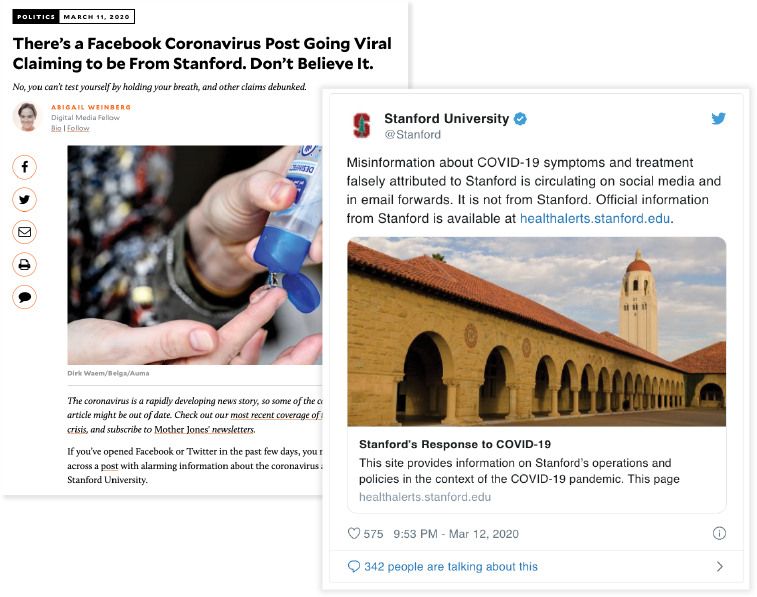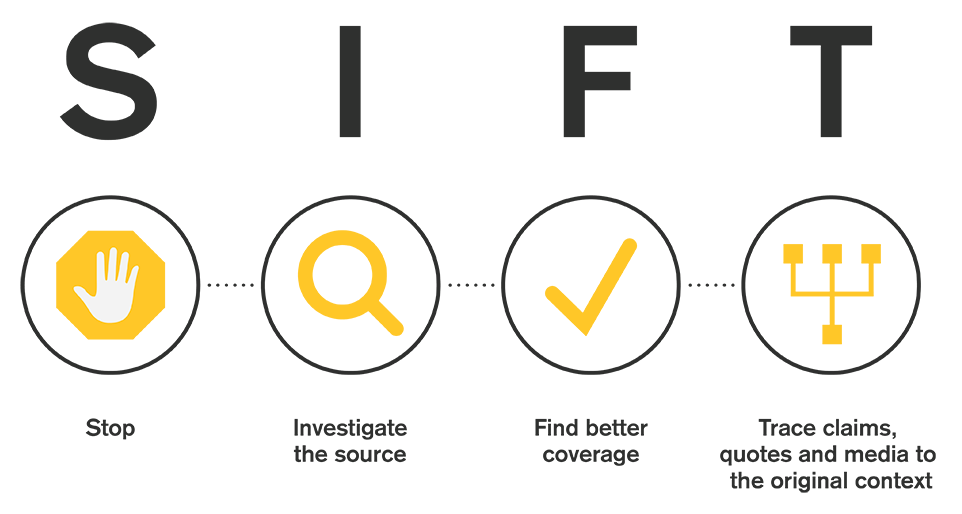Exercise judgment
None of this makes cynicism the right response. Not believing in anything can be as dangerous as being too trusting. Instead, we need to apply judgment. Businesses call the process of thoroughly checking out proposed deals due diligence, and it’s a term that fits here, too. Let’s bring due diligence to what we read, watch, and hear.
We need to — and we can — do a better job understanding who’s telling it straight, based on verifiable evidence, and who isn’t. We can use judgment to decide what sources of information deserve to be trusted more than not, and which ones deserve to be mistrusted as a rule.
This process requires all of us to develop and use our internal “BS detectors.” Fortunately, there are smart, proven ways to sort things out.
Find information sources you trust.
The first thing we recommend is to find sources of information that you trust more than not, for sound journalistic reasons — we’ll talk more about journalistic principles in Part Three of this course — as opposed to one’s own ideology. For example, we at the ASU News Co/Lab have come to rely, in part, on the New York Times for solid reporting about global issues. We don’t assume the Times always gets things right. It has made some terrible mistakes over the years. But the organization has internal rules and procedures aimed at ensuring quality journalism. (We wish it explained them better to the general public, as outside research shows people in general don’t understand well enough how genuine journalism works.)
Don’t rely on any single source of information.
The next thing is not to rely on any single source of information. The Times may have gotten it right, but how did the Wall Street Journal cover the issue? We can learn from the differences.
The quality gap between two excellent news organizations are minor next to the difference between a fine traditional journalism operation and a random post online. The reliability of text that a friend cuts and pastes — from who knows where — into a Facebook post is questionable by definition. Here’s an example: In the COVID-19 information ecosystem, we regularly saw in our newsfeeds the supposed advice from “a doctor” someone claimed to know, quoting from a “Stanford Hospital” document that didn’t exist.

Tech platforms are media companies in some ways. They are not news outlets. The named sources whom journalists quote in stories are a far cry from the semi-anonymous people, whose existence is often impossible to verify, who pop up in social media shares.
We are not saying social media posts are wrong by definition. We often get news via (as opposed to from) social media, in the form of news shared from a trustworthy media source. Moreover, we get news about “hyperlocal” (neighborhood) topics in Facebook groups and other sources. We are saying that in a media ecosystem with increasingly blurred lines, judgment rules.
So when you have doubts — and you should constantly have doubts when you’re seeing information relayed on social media — it’s essential to look into things yourself to some degree.
Verify claims.
One of our favorite techniques, developed by Mike Caulfield, a university professor in Washington state, is called SIFT (we go into this much more deeply in the course). It stands for:

